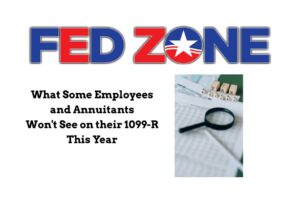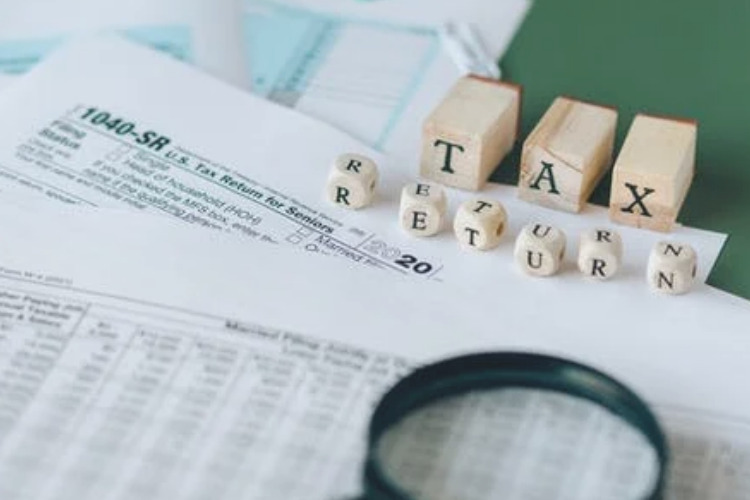This column explains why what appears to be an incorrect 2020 Form 1099-R is in fact correct.

Edward A. Zurndorfer
Some federal employees and annuitants are reading this column now in early March, shortly after receiving their 2020 1099-R forms (Distributions from Pensions, Annuities, Retirement or Profit-Sharing Plans, IRAs, Insurance Contracts, etc.). The 2020 Form 1099-R reports distributions taken during 2020 from IRAs and retirement plans, including the Thrift Savings Plan (TSP).
Upon looking at their 2020 1099-R forms, many of these employees or annuitants (or their tax preparers) will likely be contacting their IRA custodians (who issued the 1099-R as a result of an IRA distribution made during 2020) or the TSP Service Office (who issued a 1099-R in case a TSP participant requested a distribution from their TSP account during 2020). In either or both cases, the IRA owner or the TSP participant will be complaining that there are some major errors or misinformation on their 1099-R statements.
Contrary to what these IRA owners and TSP participants may believe, there are most likely no mistakes or oversights on their 2020 1099-R statements. But these IRA owners and TSP participants certainly deserve an explanation of why their 2020 1099-R statements may seem incorrect. This column explains why what appears to be an incorrect 2020 Form 1099-R is in fact correct. In addition, and most importantly, the column will explain how a 1099-R recipient needs to report the information on his or her 2020 federal income tax return.
Those federal employees and annuitants who received a 2020 Form 1099-R from either their IRA custodians or the TSP Service Office (or both) should not panic when their 1099-R does not match with what the employee or annuitant expects. But the employee or annuitant is advised to take the necessary steps on their 2020 federal income tax returns to properly report transactions that occurred in their IRA or TSP during 2020. It is important to understand that while a Form 1099-R provides valuable information, the form does not present a full and complete picture of the transactions that occurred during the previous year. Some transactions will not be reported on the Form 1099-R.
The Coronavirus Aid, Relief, and Economic Security (CARES) Act, which was passed into law in March 2020, resulted in two new incidences in which extra tax reporting on one’s 2020 federal income tax returns will be necessary. These incidences – returned RMDs and Coronavirus-related IRA and qualified retirement plan tax-break distributions – are now discussed.
Returned Required Minimum Distributions (RMDs)
One of the provisions coming out of the CARES Act was waived 2020 RMDs. Any individual who needed to take an RMD during 2020 for whatever reason – traditional owners over age 70.5, inherited IRA owners of any age, retired 401(k) and 403(b) retirement owners over age 70.5, and retired TSP participants over age 70.5 during 2020 – were told they could skip the RMD for 2020. But some individuals, including federal employees and annuitants who were subject to RMDs for the year 2020, took their RMDs before the CARES Act became law in late March 2020. In IRS Notice 2020-51, the IRS allowed IRA owners and qualified retirement plan and TSP participants who already taken their 2020 RMDs to repay those RMDs. If done properly and timely, a repaid RMD would result in what normally have a been a fully taxable distribution from a traditional IRA or a qualified retirement plan to being a nontaxable event.
Those IRA owners and TSP participants who did properly repay their RMDs by the due date of August 31, 2020 may be surprised to discover that their 2020 Form 1099-R still shows the RMD as a taxable distribution. In other words, Box 1 of their 1099-R shows the full “gross distribution”, Box 2 shows the “taxable distribution” as the same as the “gross distribution”, and Box 7 shows a Code “7” meaning a “normal distribution” occurred. This is the case even if the IRA owner or TSP participant returned the entire RMD.
IRA owners and TSP participants will think something is wrong and will worry that because the IRS receives a copy of the 1099-R, that the distribution is fully taxable when in fact it is not. But the Form 1099-R does not tell the whole story. It is up to the IRA owner, to the TSP participant, or to their tax preparer to fill in the required information on the 2020 federal income tax return showing the repayment of the RMD that negated the taxable distribution.
In particular, an IRA owner or a TSP participant who successfully completed a repayment or rollover of their RMD should do the following on their 2020 Federal income tax return: (1) Report the total (gross distribution) on line 4a of Form 1040 or Form 1040 SR; and (2) enter “Rollover” next to line 4b. If the total distribution was rolled over, enter $0 on line 4b. If the entire amount was not rolled over, then the portion of the distribution not rolled over should be entered on line 4b.
Note that in the case of an IRA, the IRA custodian who received the rollover will furnish both the IRA owner and the IRS with Form 5498 (IRA Contribution Information) which will officially confirm the rollover amount. It is not necessary to file Form 5498 with the tax return. The TSP Service Office will also provide the TSP participant with official paperwork confirming the rollover of RMD funds to the participant’s TSP account. This paperwork does not have to be filed with the TSP participant’s tax return.
Coronavirus-related IRA & Retirement Plan Distribution Tax Breaks
Some individuals (including federal employees and annuitants) affected by Covid took advantage of the special coronavirus-related distributions (CRD) tax-break that was available during 2020, another provision coming out of the CARES Act. Penalty-free distributions (for individuals under age 59.5) were permitted from IRAs and qualified retirement plans and the TSP. There is the option of paying the taxes associated with the distributions over a three-year period. Individuals who took CRDs also have the option of repaying the distributions to an IRA or to the qualified retirement plan or TSP over a three-year period. If the CRD is fully repaid, then the distribution will not be taxable.
Any individual who took a CRD may be surprised when they look at their 2020 Form 1099-R that there is no special code in Box 7 of their 1099-R. An IRA or TSP distribution would normally be coded with a code “7” (“normal” distribution taxable in the year received) or a code “1” in Box 7 (early distribution, subject to ordinary tax and a 10 percent early withdrawal penalty). Like the rollover of the RMD, the CRD has to be handled specially on the 2020 federal income tax return.
A federal employee or annuitant who took a CRD during 2020 needs to file IRS Form 8915-E (Qualified 2020 Disaster Retirement Plan Distributions and Repayments) (use for Coronavirus-Related and Other Qualified 2020 Disaster Distributions in order to report the CRD and get relief from the 10 percent early withdrawal penalty. Form 8915-E includes a box that can be checked to elect out of the three-year spread of income if the employee or annuitant wishes to include all the income in 2020. Some employees or annuitants may want to do that if their 2020 income was lower than normal, and they expect 2021 and 2022 to be higher income years.
Those individuals who elect to repay their CRD to an IRA or to the TSP should also report their repayments on Form 8915-E.
Edward A. Zurndorfer is a CERTIFIED FINANCIAL PLANNER™ professional, Chartered Life Underwriter, Chartered Financial Consultant, Chartered Federal Employee Benefits Consultant, Certified Employees Benefits Specialist and IRS Enrolled Agent in Silver Spring, MD. Tax planning, Federal employee benefits, retirement and insurance consulting services offered through EZ Accounting and Financial Services, and EZ Federal Benefits Seminars, located at 833 Bromley Street – Suite A, Silver Spring, MD 20902-3019 and telephone number 301-681-1652. Raymond James is not affiliated with and does not endorse the opinions or services of Edward A. Zurndorfer or EZ Accounting and Financial Services. The information has been obtained from sources considered to be reliable, but we do not guarantee that the foregoing material is accurate or complete. While we are familiar with the tax provisions of the issues presented herein, as Financial Advisors of RJFS, we are not qualified to render advice on tax or legal matters. You should discuss tax or legal matters with the appropriate professional.

